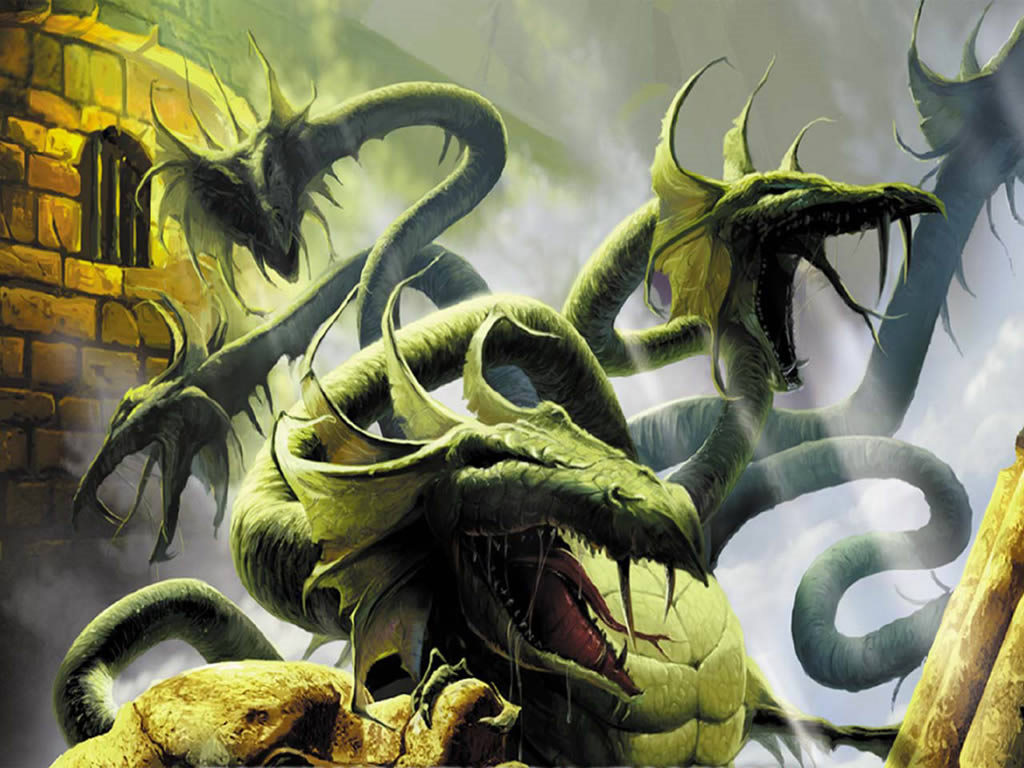

Hafgufa, a whale of fabulous size, described as a sjóskrímsli 'sea monster' together with the lyngbakr.Devil Whale, a demonic whale the size of an island.Curruid, from whose bone the Gae Bulg is made in Celtic mythology.Charybdis of Homer, a monster whose mouth formed a whirlpool that sucked any ship nearby beneath the ocean.Cetus, a monster sent by Poseidon to devour Andromeda, only to be destroyed by Perseus.Capricorn, Babylonian Water-Goat featured in the Zodiac.Aspidochelone, a giant turtle or whale that appeared to be an island and lured sailors to their doom.Second fontana dei mostri marini, Florence, Italy In May 2017, The Guardian published an article claiming a giant sea monster's corpse was found in Indonesia, and also published an alleged photograph of "it." Example The analysis of the Zuiyō Maru carcass revealed a comparable phenomenon in decomposing basking shark carcasses, which lose most of the lower head area and the dorsal and caudal fins first, making them resemble a plesiosaur. Cases of boneless, amorphic globsters are sometimes believed to be gigantic octopuses, but it has now been determined that sperm whales dying at sea decompose in such a way that the blubber detaches from the body, forming featureless whitish masses that sometimes exhibit a hairy texture due to exposed strands of collagen fibers. It was first described as a "mammoth jellyfish as long as a bus" but was later determined to be another corpse of a sperm whale. Īnother modern example of a "sea monster" was the strange creature washed up in Los Muermos on the Chilean sea shore in July 2003. Likewise, DNA testing confirmed that an alleged sea monster washed up on Newfoundland in August 2001, was a sperm whale. The alleged plesiosaur netted by the Japanese trawler Zuiyō Maru off New Zealand caused a sensation in 1977 and was immortalized on a Brazilian postage stamp before it was suggested by the FBI to be the decomposing carcass of a basking shark. Unidentified carcasses are often called globsters. Sea monster corpses have been reported since recent antiquity (Heuvelmans 1968). It was initially postulated to be a gigantic octopus. Augustine Monster was a carcass that washed ashore near St. It is likely that many other reports of sea monsters are misinterpreted sightings of shark and whale carcasses (see below), floating kelp, logs or other flotsam such as abandoned rafts, canoes and fishing nets. In 1892, Anthonie Cornelis Oudemans, then director of the Royal Zoological Gardens at The Hague, saw the publication of his The Great Sea Serpent, which suggested that many sea serpent reports were best accounted for as a previously unknown giant, long-necked pinniped. Ship damage from Tropical cyclones such as hurricanes or typhoons may also be another possible origin of sea monsters.

Cryptozoologists suggest that modern-day monsters are surviving specimens of giant marine reptiles, such as an ichthyosaur or plesiosaur, from the Jurassic and Cretaceous Periods, or extinct whales like Basilosaurus. Other reports are known from the Pacific, Indian and Southern Oceans (e.g.

There is a Tlingit legend about a sea monster named Gunakadeit (Goo-na'-ka-date) who brought prosperity and good luck to a village in crisis, people starving in the home they made for themselves on the southeastern coast of Alaska.

The monster was longer than our whole ship.Įllis (1999) suggested the Egede monster might have been a giant squid. The unknown creature was using giant fins which propelled it through the water. The head was small and the body short and wrinkled. The monster lifted its head so high that it seemed to be higher than the crow's nest on the mainmast. Hans Egede, a Dano-Norwegian missionary, reported that on a voyage to Godthåb on the western coast of Greenland he observed: Ī most terrible creature, resembling nothing they saw before. Another account of an encounter with a sea monster comes from July 1734. Sir Humphrey Gilbert claimed to have encountered a lion-like monster with "glaring eyes" on his return voyage after formally claiming St. For example, Avienius relates of Carthaginian explorer Himilco's voyage ".there monsters of the deep, and beasts swim amid the slow and sluggishly crawling ships." (lines 117–29 of Ora Maritima). Sea monster accounts are found in virtually all cultures that have contact with the sea. Sea serpent reported by Hans Egede, Bishop of Greenland, in 1734


 0 kommentar(er)
0 kommentar(er)
